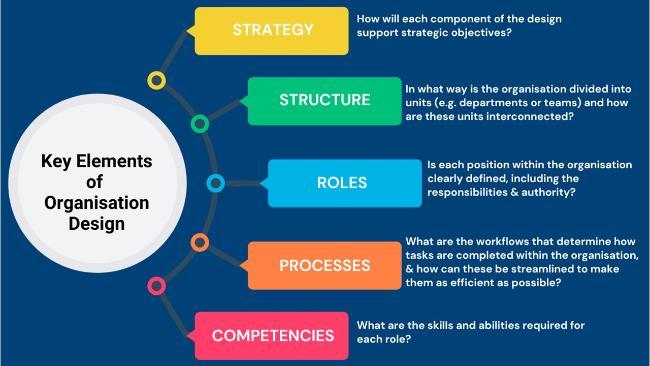Page updated 9 January 2025
Organisation Design: an overview
When you arrange or rearrange resources, roles, processes, and workflows to achieve efficiency and improve performance in an organisation, you are undertaking organisational design.
This process not only focuses on technical aspects of structuring and aligning various components of an organisation, but also emphasizes the human side, fostering employee engagement and commitment.
The image below shows the key elements of organisation design, along with the key questions they look to answer:

Organisational Design methodologies follow a clear process. First, the current state is assessed to assess the current state to identify strengths and weaknesses and establish a clear vision for what the organisation aims to achieve. A new organisational framework must then be created to align with the vision. Once this structure is ready, the new design is implemented. A Change Management strategy is a vital part of this process.
Organisation Design and Change Management
The relationship between change management and organisation design is integral to successfully navigating and implementing changes within an organisation. Both concepts are interrelated but serve distinct roles in facilitating effective transformations.
UCD Organisation Design Framework
A UCD Organisation Design Framework was approved by UCD’s University Management Team in 2017. This framework is a three-tiered support model, with each tier reflecting varying degrees of Organisational Design requirements from a size and complexity perspective.
There are five phases in the UCD Organisation Design Approach: Plan, Assess, Design, Construct and Implement.
Ownership of the Framework sits with the Head of Change and Organisation Design in the HR People and Organisation Change unit, and deployment operates in partnership with the Director of HR Partners as per the framework tiered model.
For further information please contact (opens in a new window)peoplechange@ucd.ie.